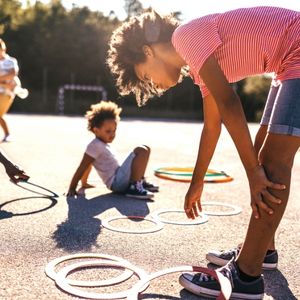
Functional Play

Date Published: May 25, 2022
Author: Jennie Brevik, Registered Behavior Technician
Functional play* is an important skill for all children. It teaches them about the world around them, encourages them to socialize with others, and allows them to develop their motor skills. Occasionally, children may not engage in functional play and seek activities that fit their sensory needs. How can we teach functional play skills to children?
One method was referenced in a 2016 study by Akers et al**. The researchers found that using a visual activity schedule on the playground increases functional play skills.
For this study, the researchers worked with a group of three preschool children between the ages of 4 and 5 years old. The participants had a history of utilizing visual schedules in their classrooms. Before the study, the researchers brought the children outside and told them to “go play.” They found that the children did not engage in functional play outside. When conducting the study, the researchers brought out a set of pictures with activities that had a clear beginning and end, such as sliding down a slide or climbing a ladder. They had the children choose the activities that they wanted to do and place them on their visual schedule. Initially, the children had three seconds to complete each activity before the researchers would instruct them using hand-over-hand guidance.
Once all of the activities were completed, the children would be given a highly preferred edible item. The researchers found that the children quickly learned how to engage in functional activities on the playground and did not need assistance other than the visual schedule.
Two weeks after the first part of the study was completed, the researchers removed the visual activity schedule and the children went back to their baseline levels of playing on the playground. After the two-week period was over, the visual schedules were reintroduced to the children and their functional play skills returned.
This study demonstrated that using visual supports for these individuals supported their learning of functional play skills and enriched their social connections and interactions. The study offers insight into the effectiveness of visual supports. Visual supports can be individualized and can be incorporated into a child’s daily learning if appropriate.
If you are interested in a program like the one mentioned in the study above, please contact your child’s BCBA or teacher to find out more!
*Functional Play: Defined as play with toys or objects according to their intended function (e.g., rolling a ball, pushing a car on the floor, pretend to feed a doll). (Source: https://bluebirddayprogram.com/functional-play/)
**Akers et all, 2016, An evaluation of photographic activity schedules to increase independent playground skills in young children with autism, https://onlinelibrary.wiley.com/doi/epdf/10.1002/jaba.327
About the Author:
Jennie Brevik is a Registered Behavior Technician (RBT) on the Faces Behavioral Services team. Faces Behavioral Services is a department of the Pacific Autism Center for Education that supports children with autism in reaching their full potential utilizing Applied Behavior Analysis (ABA).
Disclaimer: “Keeping Up the PACE” is a blog operated by Pacific Autism Center for Education with information provided by professional therapists. This content is not intended for the purpose of diagnosis of any condition. If you have a question for our team, please email us at email hidden; JavaScript is required.

